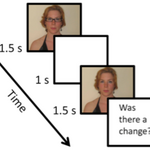Vision

A new study says the brain, not the eye, controls the cellular process that leads to glaucoma, a finding that may help develop treatments for one of the world's leading causes of irreversible blindness.
In the paper, vision scientists and ophthalmologists describe how they performed a data and symmetry analysis of 47 patients with moderate to severe glaucoma in both eyes. In glaucoma, the loss of vision in each eye appears to be haphazard. Conversely, neural damage within the brain caused by strokes or tumors produces visual field loss that is almost identical for each eye, supporting the…

It sounds positively un-American to have government picking winner and losers in the drug marketplace, but the writing is on the wall for our health future: taxpayer-funded Medicare is going to be the economic driver in medical decision-making and policy sooner or later.
And if all eye doctors were told to prescribe the less expensive of two drugs to treat two common eye diseases in older adults, it could save taxpayers $18 billion over a 10-year period, say scholars in a new paper. And the rest of the U.S. health care system could save $29 billion also, according to the findings of a team…

Babies begin to learn about the connection between pictures and real objects by the time they are nine-months-old, according to a new paper in Child Development.
Babies can learn about a toy from a photograph of it well before their first birthday, the scholars from Royal Holloway, University of London, and the University of South Carolina found.
Researchers familiarized 30 eight and nine-month-olds with a life-sized photo of a toy for about a minute. The babies were then placed before the toy in the picture and a different toy and researchers watched to see which one the babies reached…

Rapid eye movements, known as saccades, have been a source of a nature versus nurture debate.
One hypothesis has been that this neurological behaviour is a product of culture in people of Chinese origin. A new study casts doubt on that.
Scientists tested three groups – students from mainland China, British people with Chinese parents and white British people – to see how quickly their eyes reacted to dots appearing in the periphery of their vision.
These express saccades – particularly fast responses which begin a tenth of a second after a target appears - were similar…

No one wants to tell someone they can't drive. America was founded on the pioneer spirit and unless we cramp everyone into urban concrete jungles, which are implicated in any number of health, pollution and crime issues, America's vast expanses mean we are a car culture.
But a diagnosis of hemianopia, blindness in one half of the visual field in both eyes, usually as the result of strokes, tumors or trauma, often means the end of driving. But it isn't required in countries like Belgium, the Netherlands, the UK, Switzerland and Canada if people can pass a specialized road test.
But…

The modern world has a problem. We are undergoing spontaneous mutations caused by radiation, even at low levels. This radiation can break chromosomes into pieces that reattach randomly and sometimes create genes that didn't previously exist.
Actually, that's happening because of nature. Deep space cosmic rays have been doing that to everything on earth for as long as the planet has existed. Even organic food.
High-energy radiation is a different beast, of course, and damage to DNA by high energy radiation constitutes the most lethal damage occurring at the cellular level. Very low-…

Sensory Substitution Devices (SSDs) use auditory or tactile stimulation to provide representations of visual information and can help the blind "see" colors and shapes.
Users recognize the image without seeing it because the information is transformed into audio or touch signals. But few people in the blind community actually use them because they are cumbersome and unpleasant to use.
That may change with EyeMusic, which transmits shape and color information through a composition of musical tones - "soundscapes." EyeMusic was developed by senior investigator Prof. Amir Amedi, PhD, and…

There are those among us who are “health blind”, i.e., handicapped at sensing the health signals most of us easily recognize on others around us. They are the color blind. But we at O2Amp can fix that.
1. The Health-Blind Among Us
Despite the presence of modern electronic medical sensing tools, medical personnel still rely on their naked-eye visual skills when examining and judging the symptoms and health of patients (Savin et al. 1997).
But it is not widely appreciated that approximately 5% of medical personnel – 10% of men and 1% of women – are “health blind”, i.e., they are severely…

When we open our eyes, visual information floods the brain and it interprets what we're seeing. Researchers recently non-invasively mapped this flow of information in the human brain by combining two existing technologies, which allowed them to identify both the location and timing of human brain activity.
They scanned individuals' brains as they looked at different images and were able to pinpoint, to the millisecond, when the brain recognizes and categorizes an object, and where these processes occur.
When and where
Until now, scientists have been able to observe the location or…

A paper has determined that while people can reliably become aware of changes - visual awareness can extend beyond objects we focus on - that doesn't mean we can identify what has changed. Their example is that a person might notice a general change in someone's appearance but not be able to identify that the person had had a haircut.
Lead author Dr. Piers Howe from the Melbourne School of Psychological Sciences said the research is the first to show in a scientific study that people can reliably sense changes that they cannot visually identify.
"There is a common…